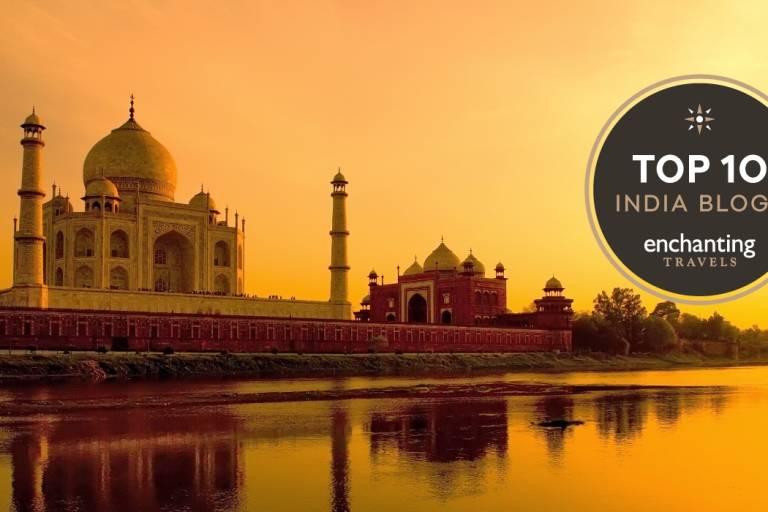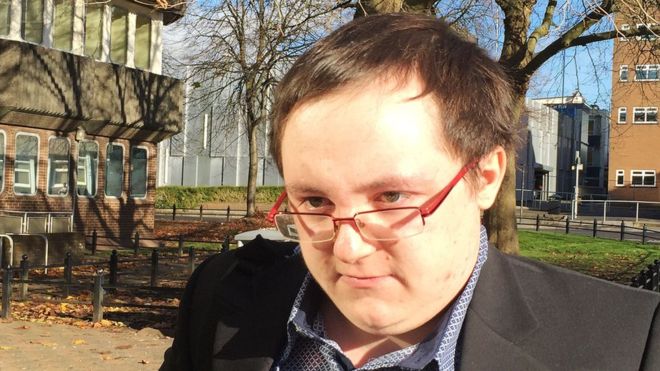Majestic lakes, mountains, history and even ecotourism resorts, opt for Russia’s lesser-known cities and nature parks and there’s enough to keep you exploring for weeks. Share your Russia tips in the comments below

Ruskeala, Karelia
Why go?
Karelia, a republic in north-west Russia, is known as one the country’s most beautiful places. The nature here is breathtaking and more Finnish than Russian, with lakes, waterfalls and trees growing on giant rocks. Ruskeala is a village close to Sortavala, one of the region’s bigger towns. The main interest here is Ruskeala mountain park, with a marble canyon that is now a lake with crystal clear water, and another underground lake. You can rent boats, go diving, or hike. In summer there are light shows on the lake.
Where to stay?
Since Ruskeala is tiny most tourists stay in Sortavala. Hostel Lämpö is a popular choice. Don’t be put off by the shabby pre-Soviet building: it is renovated inside and the location is excellent. If you’re staying for a while, there are several resorts, such as Hotel Piipun Piha, near the lake, slightly further from the town centre, which offer sauna and barbecue facilities, too.
•Doubles from £34, dorms from £6
How to get there?
Take the train from Ladozhsky railway station in St Petersburg to Sortavala; depending on the train the journey will take about 4-5 hours. From there several buses can take you to Ruskeala, or you can book a taxi – the drive will take about 20 minutes.
Stolby nature reserve
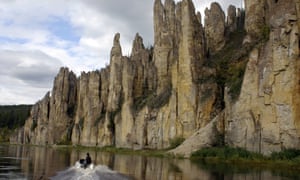
Why go?
On the north-western spurs of the eastern Sayan mountains, the Stolby nature reserve is one of the most popular tourism destinations in Siberia. The reserve’s main attraction are its rocks and cliffs, called stolby, “pillars” in Russian, after their shape. The smallest cliffs are 55 meters high, while the highest go up to 600 metres. Rock-climbing and hiking are popular activities, although for those interested in the local flora and fauna the reserve also offers guided tours of the Siberian fir taiga that sprawls underneath the rocks: a mix of a hike and a botanical and zoological tour.
Where to stay?
In the wooden cabins on the reserve’s grounds, surrounded by the taiga and the rocks. There are separate small cottages for six and eight people, and a hostel. The cabins area is called ‘the village’ and is a bit of a hike from the reserve’s main reception buildings but there is a car service for when you first arrive with your luggage.
•Dorms from £5 a night, six-person cottages from £47, zapovednik-stolby.ru
How to get there?
Fly to Krasnoyarsk from Moscow or St Petersburg (about five hours) and get to Stolby on a bus or taxi; that journey will take around 11/2 hours.
Velikiy Novgorod
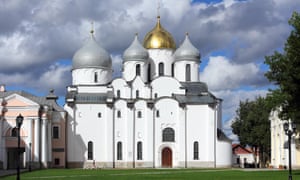
Why go?
Velikiy Novgorod, also known as Novgorod the Great, is one of the most important cities in the country, often called the “birthplace of Russia”. For a long time the city was a sovereign principality, founded by merchants and ruled in relative democracy, and the unification of Novgorod with Moscow in the 15th century was an essential step towards a unified Russia. The city is an historic one and the traditional wooden architecture museum of Vitoslavlitsi is a must-visit; the open-air exhibition of Russian izbas (farmhouses) has an ancient tradition of building without nails or metal to hold the wooden planks together. The Kremlin fortress in Novgorod is also one of the oldest in Russia, dating back to the 11th century.
Where to stay?
The Beresta Hostel with its traditional old-Russian interiors, or the Kozhevniki B&B, and its post-Soviet styles, are both good choices.
•Doubles from £26, dorms from £3
How to get there?
Fly to St Petersburg and take a fast Lastochka train (about 3 hours) from Moskovskiy railway station.
Pertopavlovsk-Kamchatsky
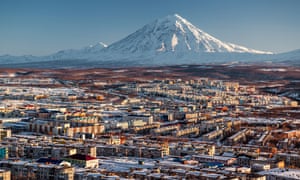
Why go?
Petropavlovsk-Kamchatsky is on the Kamchatka peninsula in the far east of Russia and is the most eastern town (with more than 100,000 people) in the northern hemisphere. Ecotourism in this region is a new trend, with various activities on offer from mountain and volcano hikes, sailing and kayaking to fishing and hunting trips. The town is also a foodie destination: Kamchatka crabs and other seafood are known delicacies.
Where to stay?
In the Nachalnik Kamchatki (The Boss of Kamchatka) mini-hotel, where all the rooms are nature-themed, with names such as Winter, Forest and Bear. There are very few hostels in the town, Hostel Fiesta being one of the few, so book your rooms in advance.
•Doubles from £32, dorms from £11
How to get there?
The only way to get to Petropavlovsk-Kamchatsky from the European part of Russia is to fly: a direct eight-hour flight from Moscow (book in advance as fares are high).
Kazan
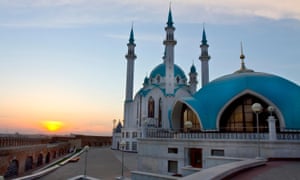
Why go?
The city of Kazan, in Tatarstan, is over a thousand years old and has always been an eclectic place, balanced between the Russian Orthodox and Muslim cultures with churches and cathedrals neighbouring mosques. One of the city’s landmarks is the Söyembikä Tower in the Kremlin fortress. It’s named after the city’s last queen, Söyembikä, who, according to legend threw herself off the tower, but actually was captured by the Muscovites led by Ivan the Terrible in the 16th century, when the city was conquered. The eclectic food of the region, a mix of Russian and Tatar, is one of the city’s highlights: try the traditional tea with chuk-chuk, a sweet pastry dish.
Where to stay?
Stereo Hostel in the city centre has a 1970s sci-fi bachelor pad vibe – and a bar onsite. If you’re looking for a quieter stay, the Stary Gorod Hotel (Old Town Hotel) is an affordable retreat in the city centre, with views of the historic Märcani Mosque.
•Doubles from £16, dorms from £4
How to get there?
Fly from Moscow (90 minutes) or St Petersburg (2 hours), or take an overnight train from Moscow’s Kazanskiy railway station.
Lake Baikal
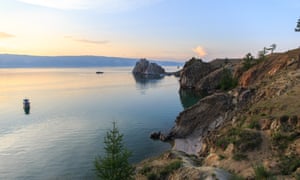
Why go?
Lake Baikal is the deepest in the world. Many Russians say that seeing the vast “Siberian sea” is a unique experience, and others tell stories of the Baikal monster, echoing tales of the Loch Ness monster. There are several hiking paths and in the summer you can swim in the lake, although the water is cold even in August. The shores are scattered with resorts, hotels and camping grounds, although many of them are of the Soviet times.
Where to stay?
The Lagoon Ranch resort is on the western bank of the Baikal, in the area called the Small Sea, and offers several types of accommodation: from the most affordable two-person summer houses to double rooms and separate cabins. There are stables and a horse-riding arena, sports grounds, Russian sauna and Baikal tour guide services available.
•Two-person summer houses from £20, doubles from £28, cabins from £37
How to get there?
Direct flights to Irkutsk are available from Moscow only. Buses and shuttles to the resorts leave from various locations in Irkutsk and take about three hours – ask for details when you book your accommodation.
Yessentuki
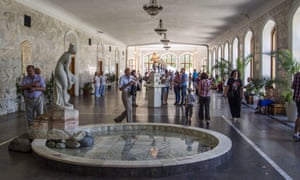
Why go?
Yessentuki is a name you might see on the shelves of Russian grocery stores around the world: this historical resort town, famous for its mineral and hot springs, gave its name to a brand of a salty mineral water. The town has been a destination for the health-conscious since the 19th century.
Where to stay?
The Kras Hotel Resort is near the city centre, has a spa and swimming pool, and some rooms dining and living room areas. A slightly cheaper option is to book a hotel close to the town’s famous baths and springs, for example Hotel Orange.
•Doubles from £11 in Hotel Orange or from £19 at Kras Hotel Resort
How to get there?
Direct flights to Mineralniye Vodi airport are available from Moscow (two hours) and St Petersburg (three hours). Some hotels offer airport pick-up, or take a train into Yessentuki – the journey is about 40 minutes on a shuttle bus and an hour on a train.
Kaliningrad
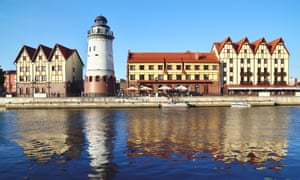
Why go?
A tiny piece of Russia in Europe, Kaliningrad used to be called Königsberg, and the architecture in the city’s old town still points towards Europe and not Russia. Traces of Kaliningrad’s German heritage can be seen in the surviving Brandenburg Gate and the Fishing Village, a tourist attraction with recreated medieval-style buildings. The flea markets here are known to be the best in Russia – many collectors from all over the world come here in hope of finding relics from the second world war. The Amber museum is another popular attraction.
Where to stay?
The city centre Utro Hostel is housed in a 19th century building, with minimalist design and big windows, and the city’s lowest prices per bunk-bed.
•Doubles from £8, dorms from £11
How to get there?
Flights to Kaliningrad are available from Moscow, St Petersburg, and several European cities (including Berlin, Riga and Copenhagen). Overnight trains to Kaliningrad leave from Berlin and Warsaw. If you plan to travel between other parts of Russia and Kaliningrad, you will need a double-entry visa. There is also a special short-term Kaliningrad visa available on the border. For more information visit the Foreign Affair Ministry website.
Vladivostok
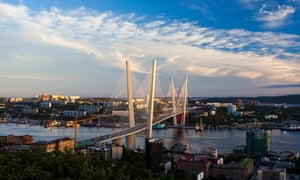
Why go?
Far east is a dream destination for many Russians, and Vladivostok, at the head of the Golden Horn Bay, is the heart of it. The city was founded in the middle of the 19th century. The best place for views is the Eagle’s Nest Hill, the city centre’s highest point. This is also a food destination as seafood is abundant here and because of the proximity to the Russian-Chinese borders it’s almost the only place in Russia where good Chinese food is widely available.
Where to stay?
The Teplo Hotel is close to the railway station, for all those Trans-Siberian railway travellers, and has dormitories and private rooms. Slightly more expensive is A Hotel Amur Bay, which is in a white 1980s-designed building. Although a chain hotel (of the Azimut brand), it’s worth the price for the amazing sea views of the Golden Horn and Amur bays.
•Dorms at the Teplo Hotel from £6, doubles at A Hotel Amur Bay from £24
How to get there?
Direct eight-hour flights to Vladivostok from Moscow. Vladivostok is also the eastern terminus of the Trans-Siberian railway. Trains leave from Moscow’s Yaroslavskiy railway station – the journey will take six days.
Altai mountains
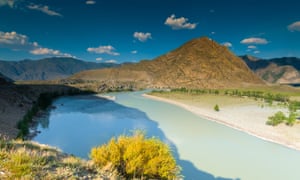
Why go?
Ecotourism is booming in the region with new resorts and hotels popping up all over the Altai – known as the ‘golden mountains’. Many offer guided and themed tours of the nearby areas, such as hikes following the routes described in local legends, that are told to the visitors as they go. Sailing, kayaking and fishing are among other activities. Spa treatments are widely available with special saunas in big cedar barrels. Altai is famous for its honey and herbs, and honey treatments and herbal tea ceremonies are also offered at the local resorts.
Where to stay?
Altika eco-hotel is one of the new developments in the region. Most rooms have panoramic views of the woods. Maryin Ostrov resort is a slightly more expensive option but also offers treatments in its spa.
•Doubles at Altika from £35 B&B, doubles at Maryin Ostrov from £39 B&B
How to get there?
Direct four-hour flights to the Gorno-Altaysk airport leave from Moscow Domodedovo. From Gorno-Altaysk there are buses and trains to the smaller villages, depending on your resort of choice. Transfer can also be organised with the resort; ask before booking.


